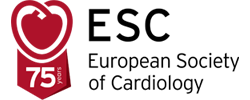Frédérique Gouriet, MD, PhD (a); Pierre-Yves Levy, MD (a); Jean-Paul Casalta, MD (a); Christine Zandotti, MD (a); Frédéric Collart, MD, PhD (b); Hubert Lepidi, MD, PhD (c); Jennifer Cautela, MD (d); Jean Louis Bonnet, MD, PhD (e); Franck Thuny, MD, PhD (d); Gilbert Habib, MD, PhD (e); Didier Raoult, MD, PhD (a)
(a) Unité de Recherche sur les Maladies Infectieuses et Tropicales Emergentes, UMR CNRS 7278, IRD 198, INSERM 1095, Faculté de Médecine, Aix-Marseille Université, Marseille, France;
(b) Département de Chirurgie Cardiaque and (c) Département d’anathomopathologie, Hôpital de La Timone, AP-HM, Aix-Marseille University, Marseille, France;
(d) Département de Cardiologie, Hôpital Nord, AP-HM, Aix- Marseille University, Marseille, France;
(e) Département de Cardiologie, Hôpital de La Timone, AP-HM, Aix-Marseille Université, Marseille, France.
Presented by: Massimo Imazio, MD, FESC.
Cardiology Department, Maria Vittoria Hospital and Department of Public Health and Pediatrics, University of Torino, Torino, Italy.
email
Background
Pericarditis is a relatively common disease that may be the first manifestation of an underlying disease. A large number of cases remain idiopathic and the best diagnostic strategy is unknown. Aim of the present work was to compare intuitive vs. systematic strategies for the etiological diagnosis of pericardial effusion over a specific time period.
Methods
Between May 2007 and September 2012, all patients with acute pericarditis (with or without pericardial effusion) who were hospitalized in the Cardiology and Cardiac Surgery Department or admitted to the Emergency Department (University Hospital of Marseille) with the prescription of standardized procedure were included in the study (see Figure 1).
Results
A total of 1162 patients with suspected pericarditis were included. A standardized diagnosis procedure was performed for 800 patients, and 362 had pericardiocentesis.
Acute pericarditis was diagnosed in 933 patients. No aetiological diagnosis was established in 516 patients (55%), 197 patients suffered from post injury syndromes, and 156 had previously known diseases that were associated with pericarditis. Our survey allowed us to relate the probable cause of pericarditis in 64 cases. An infectious etiological diagnosis was established in 53 cases. In our study, post injury syndrome was the leading cause of pericarditis, a new diagnosis was made in 6.7% of cases, and 16% of the diagnoses were linked to a secondary, underlying disease.
Figure 1. Diagnostic strategy for acute pericarditis.

Discussion and Conclusion
The authors conclude that the adopted strategy allowed reducing the hospitalization time and speeding the diagnosis in 45% of the cases. In 4% of the cases, the health care management improved and specific c treatment was performed for bacterial and parasite infection and in thyroid dysfunction.
Comment
The authors should be congratulated for their continued effort to improve the aetiological diagnosis of pericarditis. However there some important issues to be considered in order to apply these findings to the real world of clinical practice:
- The diagnosis of pericarditis is clinical before than aetiological and clinical criteria for the diagnosis are unclear in this study (undefined at all);
- All patients with acute pericarditis were hospitalized with an increase of management costs that may be questionable;
- Patients with a different risk of complications were managed in the same way, while it has been proposed to have a triage of patients and select diagnostic test especially on the basis of clinical presentation and suspicion;
- It is important to have an aetiological diagnosis in order to have targeted therapies, but the diagnostic efforts to assess potential viral aetiologies in all cases seems of limited utility in clinical practice, since management would not be affected in these patients, where corticosteroids should not be used and aspirin or NSAID remain a mainstay;
- It is also not clear what was the real therapeutic impact of the diagnoses except for bacterial infections, systemic inflammatory diseases and cancer;
- The high number of post-cardiac injury syndromes may reflect the initial selection of patients also from a Cardiac surgery Dept., thus it would be important to know the exact proportion of different patients enrolled in each department.
In conclusion, I am not persuaded that a diagnostic strategy that prescribes an extensive number of diagnostic tests in the absence of a clinical selection, would be cost-effective and really help clinicians and patients to better cope with an episode of acute pericarditis. It is not the label that reassures me, but the fact that I have a proper, cost-effective management and treatment for the patient.

 Our mission: To reduce the burden of cardiovascular disease.
Our mission: To reduce the burden of cardiovascular disease.